Papers by Emma B Casanave
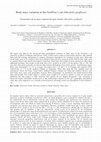
Revista Chilena de Historia Natural, 2006
We report new data on the intersexual and geographical variation in body mass of the Geoffroy'... more We report new data on the intersexual and geographical variation in body mass of the Geoffroy's cat (Oncifelis geoffroyi d'Orbigny and Gervais 1844), a little known small cat from South America, and combine them with the existing information to compare alternative hypotheses for variation in body mass. Most data on the body mass of O. geoffroyi have been obtained from previous research on this felid in four study areas of southern Brazil and central and southern Argentina. These data were added to those reported for other three additional locations. Our results set the body mass of O. geoffroyi to 4.26 ± 1.03 kg (mean ± SD, n = 56). We also show that males generally are heavier than females throughout most of this species' distributional range. Body mass dimorphism is 1.34 on average, but ranges from 1.19 and 1.21 in Uruguay and southern Chile, respectively, to 1.76 in the northern Pampas of Argentina. When data from the best sampled areas are considered (Torres del Pain...
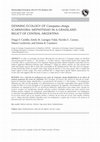
Mastozoología neotropical, 2013
In order to investigate the factors affecting den site selection in Conepatus chinga, we identifi... more In order to investigate the factors affecting den site selection in Conepatus chinga, we identified and characterized 199 (males: n = 108, females: n = 91) dens used by 7 radio-tracked skunks from August 2002 to October 2005 in a protected area of the Argentine Pampas grassland. Skunks frequently reused dens (25.1%), without significant differences between sexes. Although C. chinga are solitary animals, our data indicate that males and females may be able to share dens, presumably in the breeding season. Den sites were not homoge- neously distributed within an animal's home range, being the density in core areas greater than in middle and border regions of home ranges. This study confirmed that C. chinga selects specific habitat characteristics for its den sites and suggests that the access to prey is a major factor in their selection. RESUMEN. Uso y seleccion de madrigueras por parte de Conepatus chinga (Mephitidae) en un relicto de pastizal pampeano del centro de Argentina. Pa...
Morfología craneana de Chaetophractus villosus (Desmarest, 1804) (Mammalia, Dasypodidae)
Iheringia Serie Zoologia, 1993
Histological Study Of The Digestive Tract Of Dasypus Hybridus And Zaedyus Pichyi (Mammalia, Dasypodidae)
Iheringia Serie Zoologia, 1996
Sexual dimorphism in Chaetophractus villosus (Mammalia, Dasypodidae) based on craniometrical characters
Histología de las glándulas pelvianas de Chaetophractus vellerosus (Mammalia, Dasypodidae)
Morfología de las glándulas pelvianas de Euphractus sexcinctus (Linne, 1758) (Mammalia, Dasypodidae)
Discriminación entre las subespecies de Zaedyus pichiy (Desmarest, 1804) (Mammalia, Dasypodidae), utilizando caracteres morfométricos craneanos

Fenómenos Básicos De Comportamiento en El Aprendizaje Espacial en Anfibios
Este trabajo forma parte de un estudio integral de los mecanismos biologicos que regulan el apren... more Este trabajo forma parte de un estudio integral de los mecanismos biologicos que regulan el aprendizaje espacial en busqueda de patrones comunes en todos los vertebrados. El objetivo particular es determinar si ciertos efectos basicos (ensombrecimiento, bloqueo e inhibicion latente), extensamente documentados en mamiferos y aves, estan presentes durante el aprendizaje espacial en anfibios (sapo comun Bufo arenarum). Se llevaron a cabo tres experimentos donde los animales fueron entrenados para localizar el refuerzo (agua) utilizando claves visuales localizadas en la pared de un campo abierto. En el primer experimento, observamos que la presencia de una segunda clave visual causa que los animales utilicen menos una primera que si hubiesen estado entrenados con esta unicamente (ensombrecimiento). En el segundo experimento, se observo que la presentacion previa de uno de los componentes de una clave visual compuesta reduce o bloquea el aprendizaje acerca del segundo componente de la clave (efecto de bloqueo). En el ultimo experimento, la preexposicion al estimulo visual retardo su asociacion con el reforzador y acelero su extincion (inhibicion latente). Esta es la primera vez que se reportan estos fenomenos en anfibios. Asi, estos resultados sugieren que los mecanismos que subyacen a estos fenomenos estan evolutivamente preservados. Palabras clave Aprendizaje Ensombrecimiento Bloqueo Inhibicion ABSTRACT BEHAVIORAL BASIC PHENOMENA IN SPATIAL LEARNING IN AMPHIBIA We are analyzing the biological mechanisms that rule the spatial learning, looking for common patterns in vertebrates, potentially present in a common ancestor. The objective of this work is to determine if some basic effects (overshadowing, blocking and latent inhibition), well documented in mammals and birds, are present during spatial learning in amphibians (common toad Bufo arenarum). Three experiments were conducted where animals were trained to localize a reinforcer (water) using visual cues placed on the wall of an open field. On the first experiment, we observed that the presence of a second visual cue can cause animals to use less a first one than they would have used if trained on it alone (overshadowing). On the second one, the prior presentation of one element of a compounded visual cue reduces or blocks the learning about the second component of the cue (blocking effect). In the last experiment, the pre-exposure to the visual stimulus retarded the association with the reinforcer and accelerated its extinction (latent inhibition). This is the first time that these phenomena are reported in amphibians, showing that mechanisms that underlying those, are evolutionarily preserved. Key words Learning Overshadowing Blocking Inhibition
Morphologica Craneana De Chaetophractus Villosus (Desmarest, 1804)
Genetic diversity and population structure of the Pampas fox, Lycalopex gymnocercus, in a human-dominated landscape of southern Espinal, Argentina
Mastozoología Neotropical

Effects of oxytocin administration and the dog–owner bond on dogs’ rescue behavior
Animal Cognition
Rescue behavior is a kind of prosocial response that involves the provision of help to a stressed... more Rescue behavior is a kind of prosocial response that involves the provision of help to a stressed individual. This behavior has been observed in domestic dogs assisting their owners when they pretended to be trapped. Given the role of the hormone oxytocin as a facilitator for prosocial behavior, we aimed to evaluate the effects of its intranasal administration on the rescue behavior of dogs directed to their owners. In addition, we used the Monash Dog Owner Relationship Scale (MDORS) to assess whether the dog-owner bond was associated with this behavior. After receiving either oxytocin or saline, dogs participated in a stressed condition in which their owner pretended to be stressed inside of a box, or a control one, in which the owner was in a calm state. Dogs released their owners more frequently in the stressed condition. Contrary to our expectations, dogs who received oxytocin were less likely to open the box and took longer to do so than those that received saline. Regarding the dog-owner bond, dogs in the stressed condition who received oxytocin exhibited a lower rate and a higher latency of openings the more intense the bond was, while the opposite pattern was observed in dogs in the control condition who received saline. In conclusion, dogs would rescue their owners when they pretended to be trapped and stressed. Both oxytocin administration and the bond with the owner appear to modulate this behavior, but further studies are needed to inquire into the involved mechanisms.

Use of Coastal Area Habitats by Land Mammals
The Bahía Blanca Estuary
The dynamics of an ecological system are closely related to the processes that occur in the adjac... more The dynamics of an ecological system are closely related to the processes that occur in the adjacent environments. Consumers living in terrestrial habitats can take advantage of allochthonous resources that originate in highly productive aquatic environments and that may enable their populations to reach higher densities than those supported by land resources only. In turn, these subsidized consumers may influence the dynamics of other consumers’ populations. The terrestrial landscape that surrounds the estuary of Bahia Blanca is very diverse given its location at the intersection between the Espinal and Pampa ecoregions, but also because of the modifications related to human activities, and the presence of the coastal environments increases the complexity of its ecosystems. The ecology of the continental mammalian communities living around the estuary and coastline beyond the estuarial limits have been poorly investigated, but it is known that many species, mainly carnivores, make use of coastal environments, and the presence of populations of endemic rodents was reported. In this chapter, we review the effect of the coastal environment on the ecology of large- and medium-sized mammals. Additionally, we discuss the importance of the anthropic modifications of these coastal areas on the conservation of the coastal mammal community.

OUP accepted manuscript
Journal of Mammalogy
Carnivores are decreasing globally due in part to anthropogenic ecological disturbances. In Argen... more Carnivores are decreasing globally due in part to anthropogenic ecological disturbances. In Argentina, human activities have fragmented wildlife habitat, thereby intensifying puma–livestock conflict and leading to population control of the predator species by hunting. We investigated genetic variability and population structure of pumas (Puma concolor) from three south-central Argentine provinces with two different management policies for the species: full protection versus legal hunting. All genetic estimates were based on 83 individuals genotyped at 25 species-specific microsatellite loci. The overall genetic diversity was high (observed heterozygosity = 0.63), but lower than in other South American populations. Spatial analyses revealed the presence of two bottlenecked genetic clusters with very similar diversity and low gene flow (3% per generation) between them. However, analyses based on a priori separated groups showed that gene flow follows increasing values of hunting press...

Royal Society open science, 2017
Livestock predation is one of the major causes of conflicts between humans and pumas (Puma concol... more Livestock predation is one of the major causes of conflicts between humans and pumas (Puma concolor). Using data from interviews with ranchers and kill-site inspections, we characterized puma-livestock conflicts in Villarino and Patagones counties of central Argentinean rangelands. Depredation was considered the major cause of livestock losses, and puma attacks were reported in 46.6% and 35.4% of ranches in Villarino and Patagones, respectively. The majority of ranches underwent losses smaller than 1000 USD. The proportion of livestock lost to predation (0.1-10.4%) and financial losses (5.3-1560.4 USD) per ranch/year varied across ranches, and small sheep ranches in Villarino were affected the most. Depredation was recorded only at night and preferentially in grassland with shrubs and cropland habitats. Although nocturnal enclosures appeared to decrease sheep losses, puma hunting was considered the most effective form of reducing depredation and was implemented by most ranchers. Mor...
Chromatography - The Most Versatile Method of Chemical Analysis, 2012
Luengos Vidal, E.M., Lucherini, M. and Casanave, E. 2003. An evaluation of three restraining devi... more Luengos Vidal, E.M., Lucherini, M. and Casanave, E. 2003. An evaluation of three restraining devices for capturing pampas
Molecular data reveal a structured puma (Puma concolor) population in northern Patagonia, Argentina
Mammalian Biology

Taxonomic status of southern South American Conepatus (Carnivora: Mephitidae)
ABSTRACT Despite recent taxonomic evaluations of Mephitidae and North American hog-nosed skunks, ... more ABSTRACT Despite recent taxonomic evaluations of Mephitidae and North American hog-nosed skunks, southern South American species of Conepatus have not been thoroughly examined in a systematic context. Conepatus chinga and Conepatus humboldtii were described more than 150 years ago, based on external characters such as hair coloration and size. Although historically recognized as valid species, to date no detailed systematic analysis has been performed for either of these taxa. Herein, we evaluated the taxonomic status of C. chinga and C. humboldtii within the southern part of South America using geometric morphometrics of the skull and mandible, mitochondrial DNA analysis using the cytochrome b and cytochrome oxidase c subunit I genes, and also control region and pelage pattern variation. We failed to find morphological (skull shape and pelage coloration patterns) or molecular differences between these two species; thus, we considered that the specimens assigned to C. chinga and C. humboldtii belong to the same species. Our results indicate that environmental variation seems to be responsible for shape and size variation in Conepatus skulls from southern South America.

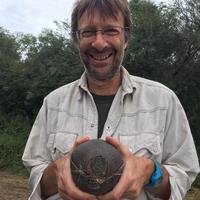
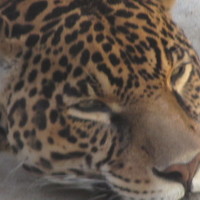

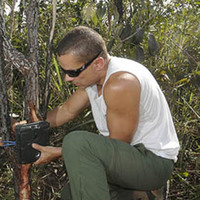
Uploads
Papers by Emma B Casanave